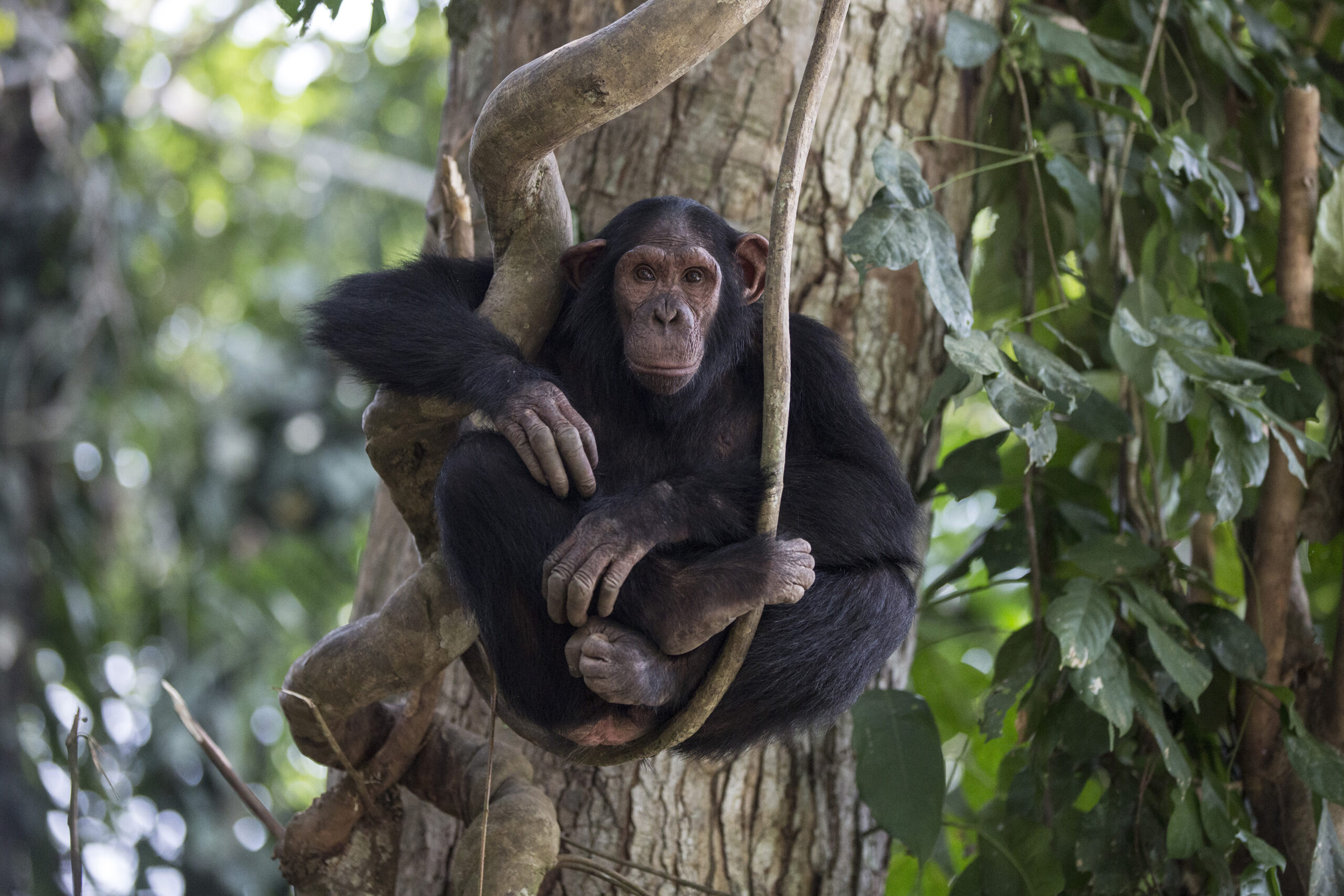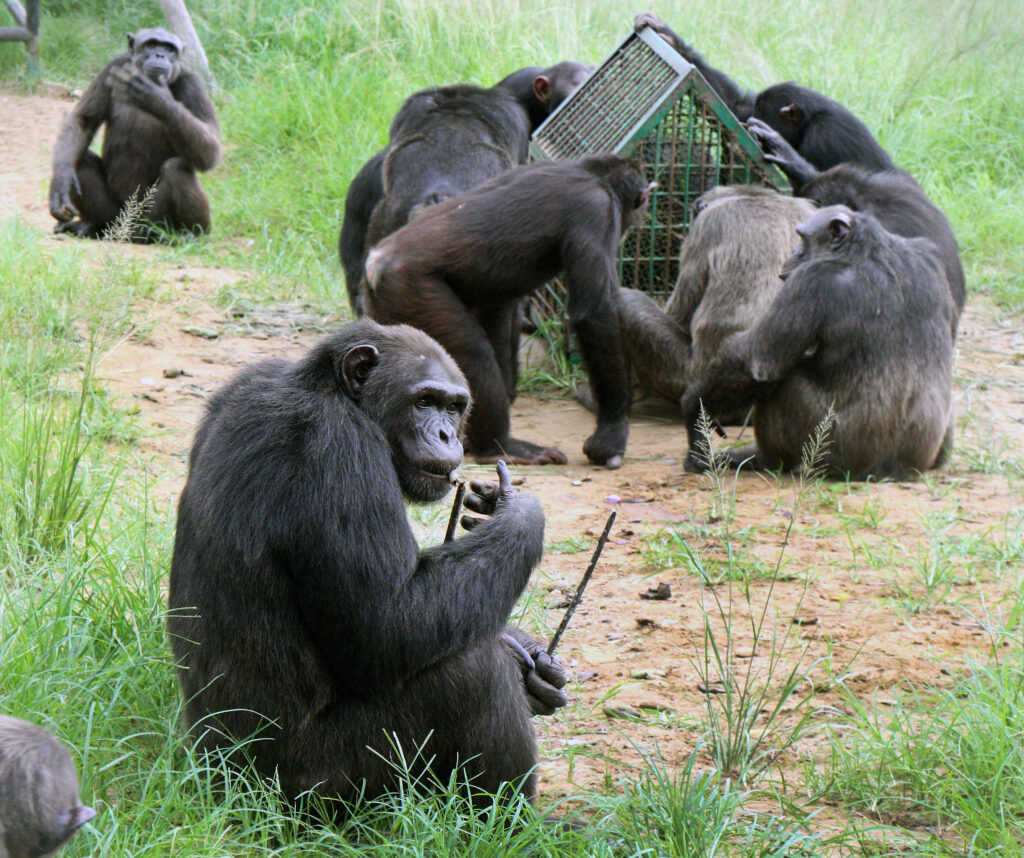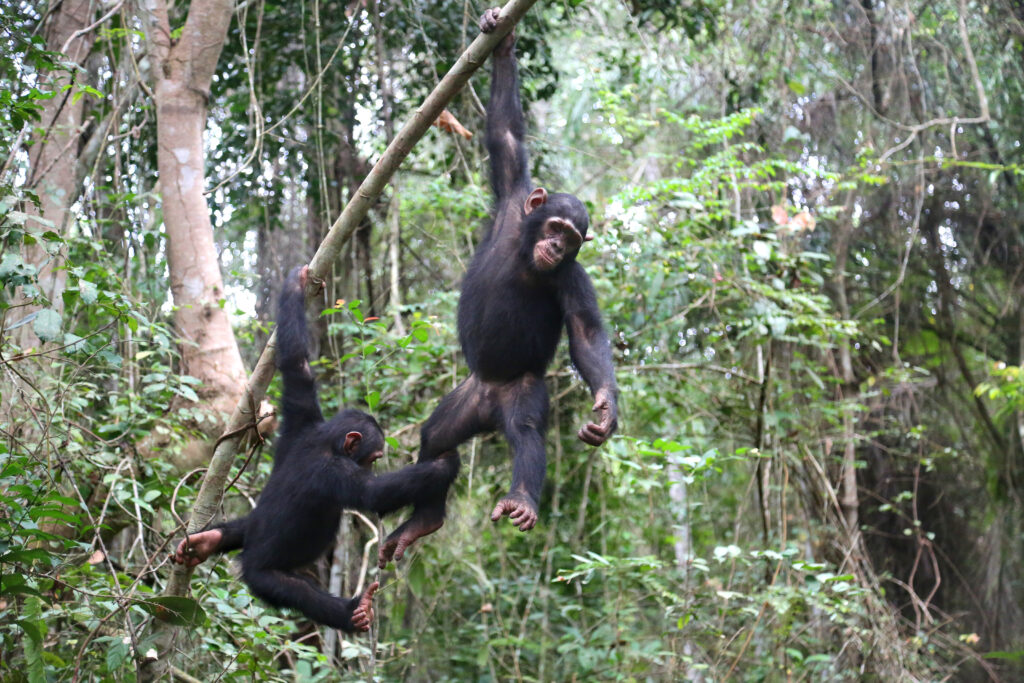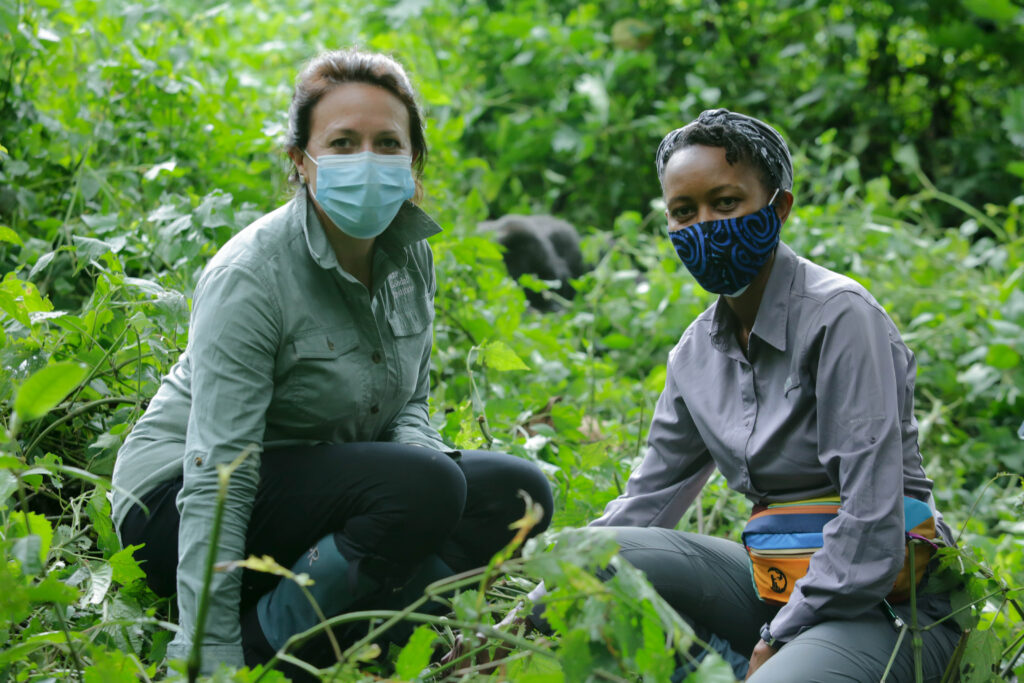
What does it take to give a chimpanzee a truly safe and fulfilling life in human care? At the Jane Goodall Institute (JGI), we've spent decades answering that question — not just through groundbreaking research in the wild, but also by setting gold standards for the ethical care of primates in sanctuaries and rehabilitation centers around the world.
With their complex physical, emotional, and social needs, rescued and captive chimpanzees require considerable support to ensure that they thrive. We sat down with JGI’s Vice President of Africa Programs Alice Macharia — who works closely with our animal care experts, including Head Veterinarian of Tchimpounga sanctuary Dr. Rebeca Atencia — to learn a bit more about what makes a safe captive environment for primates, and why this is so essential.
First, we often see people online talking about keeping chimpanzees as pets — which we know is very dangerous for both humans and chimpanzees. It’s clear that people love chimpanzees and want to feel close to them, so what exactly is the harm of keeping a chimpanzee as a pet?
When we’re talking about chimpanzees as pets, these are often taken as babies to become accustomed to humans from a young age. This means that a baby chimpanzee is taken away from its mother. We know from Jane’s groundbreaking work and from the ongoing Mother-Infant Project out of Gombe Stream Research Center just how essential these bonds are among chimpanzees, and this separation can be traumatic for both mother and child. If this separation happens out in the wild, the mother is often killed. With chimpanzees being such social beings, she is rarely the only one; it is estimated that 4-7 adult chimpanzees are killed in this process.
Of course, when a cute baby chimpanzee grows up, they can become unmanageable, and even dangerous. As with humans, chimpanzees can express a variety of emotions and temperaments — while they have a deep capacity for compassion, they are also capable of great violence. Adult chimpanzees are incredibly strong, and adolescence can bring this out in unexpected ways. Once pet owners realize that they cannot cope with these behaviors, they often surrender the chimpanzee to a sanctuary, many of which are already overwhelmed.
In response to seeing captive chimpanzees, we also receive emails and messages from concerned animal-lovers who want to report captive animal care. How can we tell when a captive primate is under harmful conditions?
The first thing you can do is to have a look at the physical site where the chimpanzee is held. Common signs of a poor environment are small cages with no room for movement and no enrichment or entertainment to keep the chimpanzee’s mind and body healthy. Chimpanzees are incredibly intelligent, and can become bored and suffer from depression without proper stimulation.
Having said that, enrichment also has to be appropriate for the chimpanzees. Because of their similarity to us, many people find it entertaining to have chimpanzees imitate human behaviors. They might give a chimpanzee a cigarette to smoke, or have them do tricks, wearing clothing and accessories that make for seemingly fun photo opportunities. Friends and visitors may be encouraged to get near and take selfies with the chimpanzee. None of this provides the benefits of wild behaviors, and images of chimpanzees like this often lead people to forget that this is an endangered species in the wild.
When you look at the chimpanzees themselves, you will see the effects of their conditions. Often, they will appear skinny, with thinning or even no hair, and sores on their skin indicating lack of medical treatment. In addition to boredom, a lack of enrichment also leads to heightened anxiety, with stereotypical behaviors such as rocking back forth, pulling their hair out, and pacing their enclosure — assuming there is room to do so.

And conversely, how can we tell when a captive primate is under safe conditions?
The opposite of what I’ve just described — a large enclosure with room to move around and lots of enrichment. In the case of chimpanzees, this also includes company among other chimpanzees, as they are very social. If a chimpanzee has their physical and emotional needs met, their appearance and behaviors will reflect that — shiny, black hair, eating well, communicating and calling out when anyone approaches. You can also tell a lot from the cleanliness of the habitats themselves.
Even though you can’t always see everything that happens behind the scenes, there are some other good indicators that a chimpanzee is at a trustworthy facility. 🔗 The Association of Zoos and Aquariums keeps a running, public list of institutions they’ve accredited through regular, intensive assessments of habitat conditions and animal welfare.
Another indicator is the way that caregivers interact with both the primates in their care and the visitors that come to see them. In addition to answering basic questions that guests might ask, can caregivers interpret sounds that the primates are making in order to better understand their behavior? We might not have exact translations for many chimpanzee calls, but knowing the difference between a greeting and a warning should be clear for the sake of both chimpanzee and caregiver. In addition, there should be specific visiting times to limit stress to the primates, and veterinarians should ideally be on staff, or at least available at all times in case of emergency.
At JGI’s Tchimpounga sanctuary in the Republic of the Congo, staff led by Head Veterinarian Dr. Rebeca Atencia implement best-in-class care to ensure the well-being of each orphaned and injured chimpanzee they receive. The 🔗 Chimpanzee Welfare Index created by Rebeca and her team uses 17 different indicators — including the diet and physical condition of the chimpanzees — which then help us understand how each individual is doing.
Writing this knowing that we have a primarily U.S.-based audience, I think it’s easy to disconnect ourselves from wildlife in the African continent. Do captive primate conditions in the U.S. have any impact on other primates around the world — including primates in the wild?
Yes, absolutely. If the captive conditions of primates in the USA are at a high standard, these set the foundation and benchmark for how other sanctuaries, zoos, or private zoos should be run. And if captive conditions do not resemble the natural environment, this can create a false perception that chimpanzees can be raised in homes as pets. It’s important for everyone to see just how much work goes into creating a safe and healthy habitat for these primates.

With all of this information, what can individuals do to help captive chimpanzees?
One of the best ways to help is by 🔗 supporting reputable wildlife sanctuaries with the funding to care for captive chimpanzees — both with basic necessities like food, veterinary materials, and cleaning supplies, but also with enrichment activities to engage their minds and help them practice skills they’d use in the wild. On the other side, avoid doing business with companies and individuals that participate in harmful exploitation of chimpanzees — including chimpanzee interactions like taking selfies.
You can also work to spread awareness about the importance of not having chimpanzees as pets. Without the demand for pet chimpanzees, the illegal trade wouldn’t be as lucrative. Participants would have to look to other sources of income, and there would be less need for captive facilities in the first place. Remember that it’s just as important advocate for the protection of chimpanzees in the wild as in captive facilities.
As Alice has shared in our conversation, high-quality captive primate care is essential — not only for the wellbeing of individual animals in captivity, but also for advancing conservation efforts globally. By prioritizing environments that meet both the physical and psychological needs of primates, we honor their intelligence, social complexity, and intrinsic value. At JGI, we're proud to be part of a global community working to ensure all primates in human care are treated with the respect and compassion they deserve.
While we advocate against keeping chimpanzees as pets, you can symbolically adopt a chimpanzee at JGI’s Tchimpounga sanctuary through our 🔗 Chimpanzee Guardian program. In doing so, you will be supporting our mission of compassionate captive care by giving a second chance to a chimpanzee orphaned and/or injured through the illegal wildlife trade.
Educating yourself in primate welfare is an important step toward compassionate care, and there are also measures in place to potentially strengthen protections for captive primates, such as the proposed Captive Primate Safety Act in the U.S. and the ban on pet primates set to take effect in the UK in 2026 under the Animal Welfare (Kept Animals) Bill.
Photo credits, in order of appearance: JGI/Fernando Turmo, Michelle Bot, JGI/Keneddy Kitandwe
The post Inside Primate Welfare: The Science of Compassionate Care appeared first on Jane Goodall's Good for All News.

